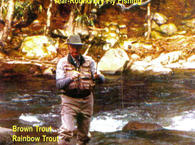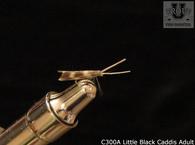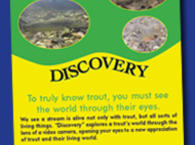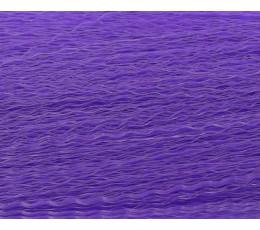The Lamar River headwaters are in the high mountains of the Absaroka-Beartooth Wilderness. Area in the Yellowstone National Park and is a tributary of the Yellowstone River. The Lamar River remains entirely within Yellowstone National Park for its entire 40 miles of length.
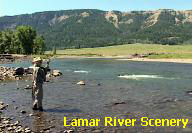 The Lamar enjoyes the reputation of being the most beautiful river perhaps in the entire world. The Lamar's most beautiful and most famous stretch is the 7 mile section of meadow known as the Lamar Valley which is located between the mouth of Soda Butte Creek and the head of its lower canyon. At various times, within this meadow, large herds of bison, and elk, can be seen as well as grizzly bears, mule deer, pronghorn sheep and packs of wolves.
The Lamar enjoyes the reputation of being the most beautiful river perhaps in the entire world. The Lamar's most beautiful and most famous stretch is the 7 mile section of meadow known as the Lamar Valley which is located between the mouth of Soda Butte Creek and the head of its lower canyon. At various times, within this meadow, large herds of bison, and elk, can be seen as well as grizzly bears, mule deer, pronghorn sheep and packs of wolves.
This entire 7 mile section of riffles, pocket water, and pools is easily accessible from the Northeast Entrance Highway which is never more than a mile from the water. The most accessible portion being immediately below Soda Butte Creek and just slightly above the canyon. In this area of the valley the road is only a few yards from the river and the hiking is easy through waist-high grass and sagebrush. As you might expect and fishing pressure is heavy, but despite the pressure, the fishing is excellent. The trout in this section are predominately cutthroats that average 10 to 14 inches in length and occasionally the angler is rewarded with a cutthroat over 18 inches.
Below the Lamar Valley, the river dives headlong into the rugged Lamar Canyon which is a 2 mile stretch that includes some very large boulders punctuated by whitewater with plunge pools below each one. The Northeast Entrance Road crosses the Lamar River after the river leaves the Lamar Canyon, just above the confluence of Slough Creek.
After the confluence of
Slough Creek the road is not often seen from the river for the next 5 miles as it passes through some hills and yet another canyon before it empties into the Yellowstone River. Fishing this last canyon is difficult in places as an angler must leap over and crawl across the enormous boulders that are found in the streambed.
To fish the section above
Soda Butte Creek, an angler must hike the Lamar River Trail which parallels the river from one mile above the Lamar-Soda Butte confluence to the river's headwaters in the Absaroka Mountains. This portion of the river generally flows in riffles and pools with a good deal of pocket water with the gradient becoming steeper as you hike up. This area is popular among backcountry anglers as there are many backpacking camping sites, however, the trout tend to be somewhat smaller.
Fishing the LamarRiver:
The Lamar River is not an early stream as the high mountains snow run-offs usually run into early summer causing murky water. However, the best fishing in the Lamar River is found in the Lamar Valley once run-off subsides, usually between late-June to late-July. Your first thought should be to match a hatch of Green Drakes, Pale Morning Duns, Blue-winged Olives, and Caddis Flies. The use of dry flies is popular and often rewarding.
Since the Lamar River runs through a beautiful meadow in Lamar Valley, the use of terrestrials may not come as a surprise. Hoppers, crickets and beetles are very common in the valley and often collect on the windshield of the cars passing through the valley. An angler might just consider a nymph suspended below a hopper if the dry flies are not effective on any given day. Blind casting is not the preferred method of searching the water; it is better to keep your eyes trained on the surface of the water, watching for a fish on the rise and then cast to it.
Early summer:
Fishing on the cool waters of the Lamar River is calendar sensitive and the opposite of some of the Yellowstone Rivers. It becomes good on the Lamar around the first of July and remains good through September which is not necessarily a good time on the other streams due to the warm water. The Pale Morning Dunn, the Western Green Drake and the Caddis Flies are the first hatches to look for followed by the Blue Winged Olives and the Golden Stoneflies. Terrestrials like the large hoppers imitations in sizes #4 through #10 are some of the best flies.
Fall:
The Blue Winged Olives, the Fall Green Drake and the Midges remain good through September. However, the fall season usually ends around the first part of October except for possibly some late hatches of the Blue Winged Olives.
 The Lamar enjoyes the reputation of being the most beautiful river perhaps in the entire world. The Lamar's most beautiful and most famous stretch is the 7 mile section of meadow known as the Lamar Valley which is located between the mouth of Soda Butte Creek and the head of its lower canyon. At various times, within this meadow, large herds of bison, and elk, can be seen as well as grizzly bears, mule deer, pronghorn sheep and packs of wolves.
The Lamar enjoyes the reputation of being the most beautiful river perhaps in the entire world. The Lamar's most beautiful and most famous stretch is the 7 mile section of meadow known as the Lamar Valley which is located between the mouth of Soda Butte Creek and the head of its lower canyon. At various times, within this meadow, large herds of bison, and elk, can be seen as well as grizzly bears, mule deer, pronghorn sheep and packs of wolves.

